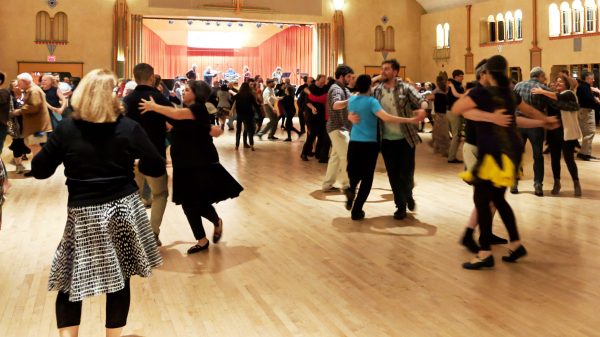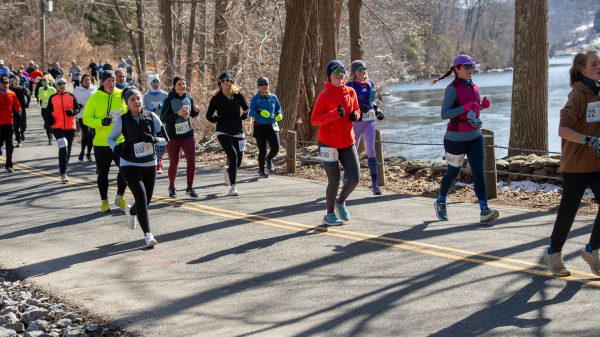KENT – When master woodworker Rick Liegl puts together his displays for a day demonstrating at the Eric Sloane Museum he likes to bring whatever he’s working on at the time.
“I love it here with all the old tools. This is our place in Connecticut,” Liegl said Saturday, June 8 as one of the participants in the Historic Trades Day.

Liegl was demonstrating his favorite style of carving for visitors—Early Connecticut and Massachusetts joinery carving that was done from the 1680s to 1700s.
As he made intricate patterns in a flat piece of Black Walnut wood, he explained what he was doing for those passing by his tent set up in front of the museum. Among the visitors were Tom and Joan Orzech of the Merryall section of New Milford.
“There is something special about having something locally made,” Liegl said. He has educated himself about the historic techniques by visiting museums such as the Wadsworth and Yale to see the early pieces. “This is my favorite style of carving.”
Other demonstrators were fiber artists Margaret Liljedahl of Hartford, who was weaving on her rigid heddle loom, and Jo Mellis of Kent, who was spinning wool on her spinning wheel. Both were inside the Noah Blake Cabin and had samples of their work available for people to look at and touch.
Outside the cabin was Gabor Ruzsan of Sparrow Bush, NY, a leather and wood craftsman with a wide assortment of items from leather belts to wood chairs from his company Garny & Co. Blacksmith Ian McCarthy was also demonstrating his skills on a portable forge.
There were many other activities happening at the museum and nearby, including a tool swap hosted by Antique Tools and Trades in Connecticut (ATTIC) with many vendors circling the back of the museum.
As visitors walked next to the tables, it led to the path to the Connecticut Museum of Mining and Mineral Science located on the grounds of the Connecticut Antique Machinery Association (CAMA). The museum was hosting a mineral, gem and jewelry show that featured 30 different vendors selling a wide variety of items from unpolished specimens by the pound to highly polished gems.
Down in the field next to the Housatonic River, CAMA’s antique tractor pull attracted many contestants from area towns. Coordinator Justin Downs of Sharon was watching closely as competitors pulled 8,400 pounds of cement blocks on a sled just past the midday.
As to how high a weight would be pulled, it was undetermined.
“It all depends. Some days with big tractors they could go up to 11,500 pounds,” he said. This is the second year for the tractor pull at the CAMA property. He said many competitors use multiple tractors at the competition.
Downs said he has a “fleet of tractors,” saying he was up to 10 at this point.
“It is just a fun hobby,” Downs said. He started with a pedal tractor at age 3 and then moved onto a garden tractor at age 7. While the equipment is important, there is a technique to a good pull.
“A lot of it depends on the tractor and learning how to work your tractor, get the throttle and brakes right. Where you back in sometimes makes a difference,” Downs said.
It is hard to say what is the “best” order for drivers to go, he commented.
“Sometimes later in line is better,” he said.
CAMA and the Eric Sloane Museum coordinate their events to make it enjoyable for visitors.











































